Our prime objective for February this year was to retain or even improve the health of our fine turf areas, and we were definitely helped in this regard by a great couple of weeks of weather. Longer days, a bit of sunshine and a prolonged break from the relentless winter rain can cheer up golf greens, but only if they are maintained sympathetically and given the correct inputs. While temperatures remain relatively low, we must be constantly wary to avoid damaging plants that will take far longer to recover than they would if they sustained similar damage during periods of good growth. Sustained pressure from any of a number of different stress factors can easily lead to bare patches in turf that will only increase in diameter when faced with spells of wet and windy weather.
One thing that greens on the southwest coast of Scotland are prone to suffering from at this time of year is root damage from leatherjacket infestations. The larvae of the crane fly (daddy long legs) have a voracious appetite for grass roots and can cause issues for turf managers anywhere in the country during a mild winter (how many times have we seen even Premier League football groundsmen naively lose their 18 yard boxes because of this underground curse), but in this part of the country where the south-westerly winds driven in by the Gulf Stream warm the coast and temperatures remain relatively high throughout most winters, crane fly larvae are a constant threat that need to be carefully monitored.
How, though, do you monitor a pest that lives the majority of its life under the surface? While we can use our years of experience to assume that certain weather patterns can combine with the known life cycle of the pest to either maximise or minimise the potential for an outbreak, there are several visual indicators that we can also use to decide whether or not to break out the insecticide. Flocks of birds congregating in one area for long periods of time is a classic sign. I don`t know how crows and seagulls know can accurately locate infestations, but they have an undoubted intelligence that I don`t question – just learn from! Checking bunkers on a windy day is another favourite tactic of mine – any leatherjackets that are actively operating in the turf around bunker edges will eventually reach the lip and fall into the sand, then blow into a heap in the middle. I found this collection in the greenside bunker at 15 last week (circa 15th February), and went spraying the next day with great success.
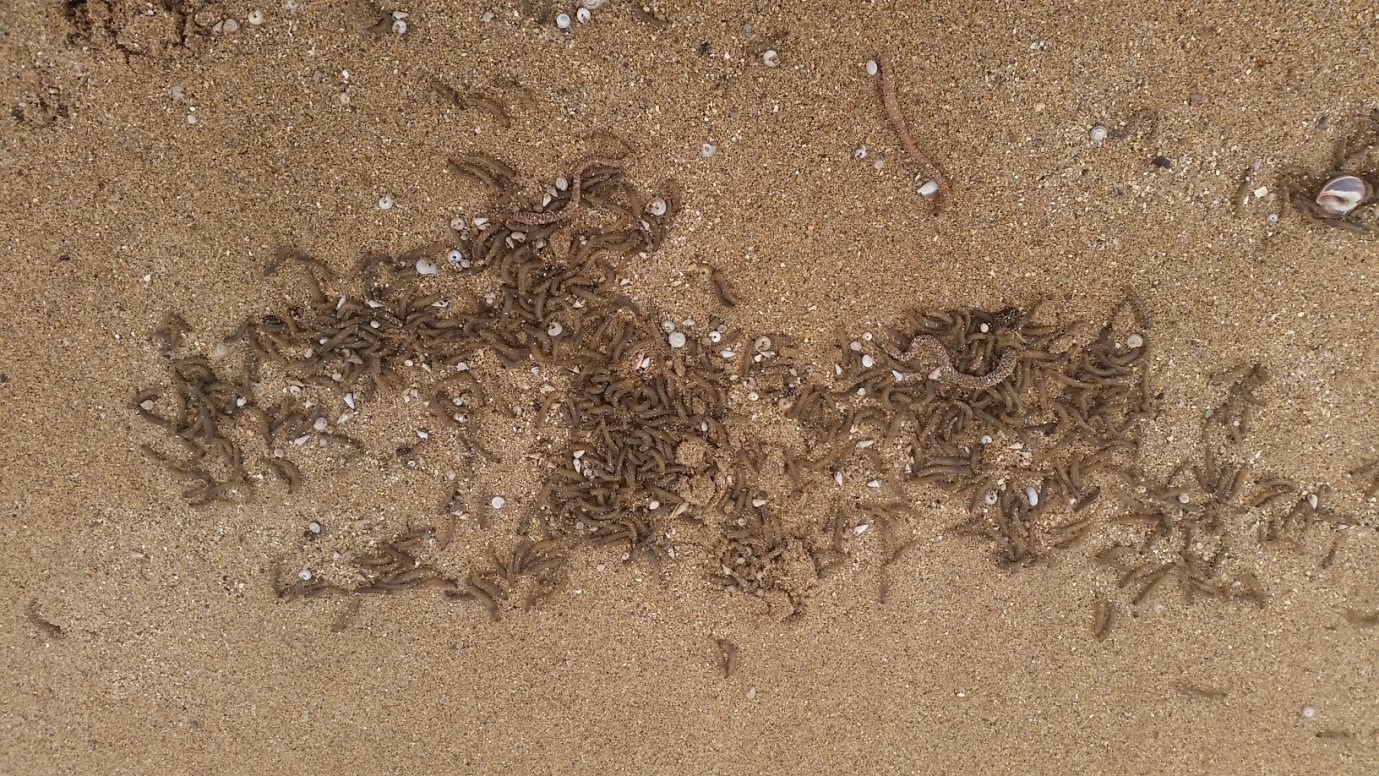
The final indication that leatherjackets are present under a golf green is the sudden re-opening of aeration holes. The insects will utilise a tiny hole to clamber to the surface under cover of darkness, where they will nibble all the grass before returning to the rootzone at dawn. Although this nibbling does not do terminal damage to the grass, further erosion can occur if this damage is inflicted before periods of significantly windy weather. You can see in the image below how the hole has been re-opened by the insect. If you had thousands of leatherjackets operating in one area on a sheltered green, the cumulative effect could be at best disruptive to surface smoothness – and at worst catastrophic to the root structure. I have experienced in the past an incident where the roots of a green I was in charge of were so badly damaged by leatherjackets that a group of crows managed to peel the turf right off a large section of a green to get to the grubs below, needless to say I have been wary of these infestations ever since!
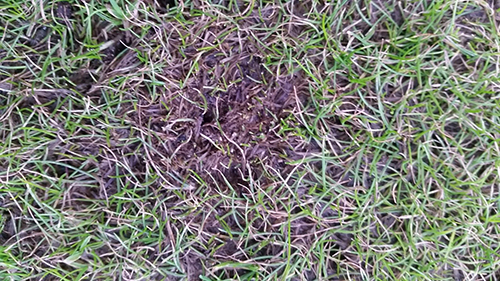
It is easy to assume during the wet winter months that no damage from pests has occurred, but when spring comes and the easterly winds bake the greens with warm sunshine the damage to root systems and the ensuing weakening of our precious plants becomes suddenly apparent, with greens becoming inexplicably patchy and very intolerant to drought stress. We will always spray our greens and tees for leatherjackets as a matter of course, but using the simple visual indicators helps us to time our applications for maximum impact. This close-up image of the 4th green, taken the day after I sprayed last week, shows how effective a single asphyxiating application of Chlorpyrifos can be if it is timed to coincide with frenzied feeding activity- imagine how many of these were actually lying on the surface of the whole green that day! There are now lots of fat crows and seagulls hopping lazily around the Dunes, I`m pretty sure some of them have eaten so much they are physically unable to fly!!
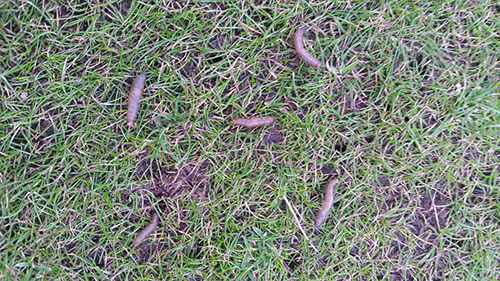
WINTER PROJECTS AT MACHRIHANISH DUNES
We have been steadily working our way through our Winter program of works, and we have turfed the tees that I posted pictures of in last month`s report. This is the newly re-modelled mens tee at the 5th hole.
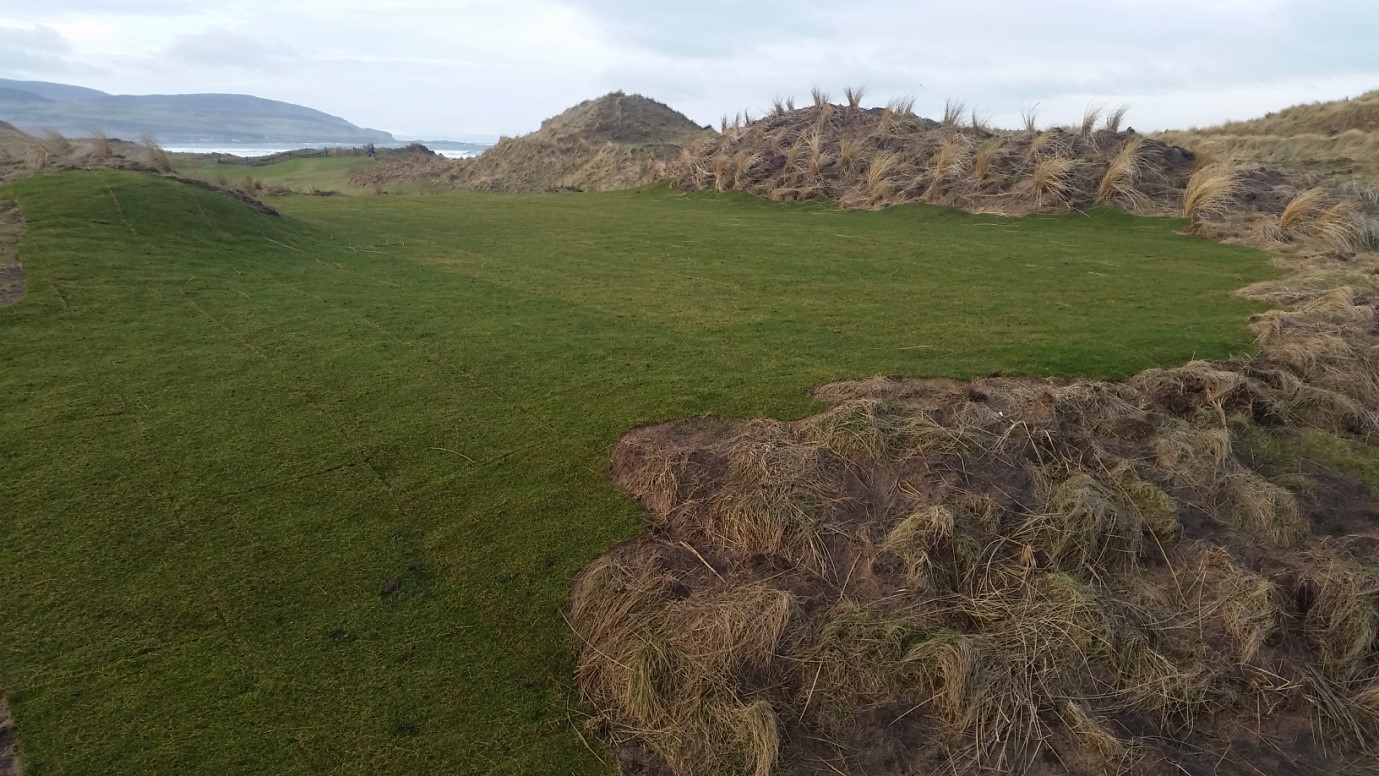
Among other things, we have also been renovating some of our worst pathways. These have been levelled, re-turfed and have had rubber mats laid on them to improve their wear characteristics and safety. The path from the bridge at the Golf House to the yellow tee at the 1st has made the biggest single difference. To my eye, it is a vast improvement to the first impression. I don`t have an image of that pathway unfortunately (you`ll have to come out here to see it for yourselves!), but I did take some pictures of the pathway alongside the 11th tee.
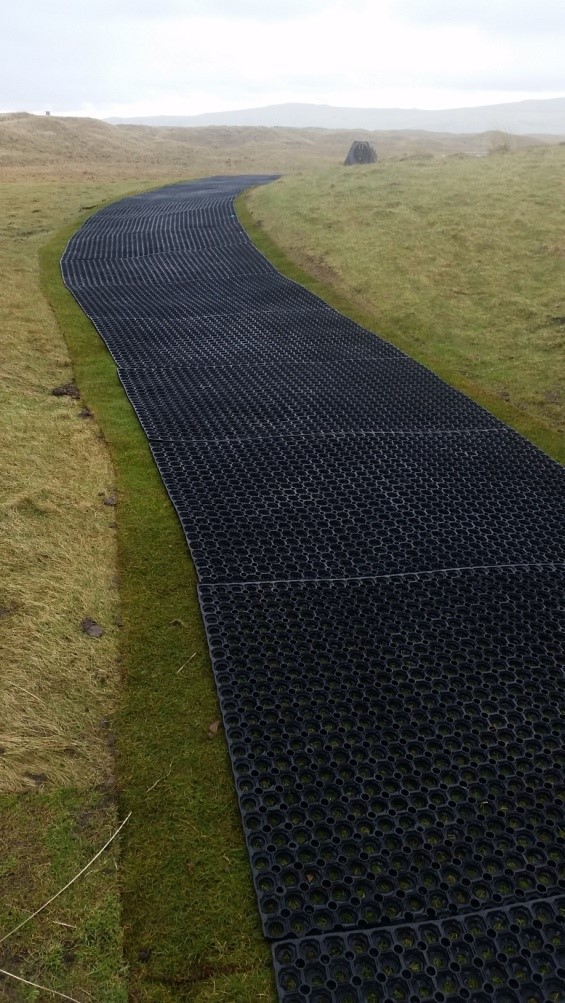
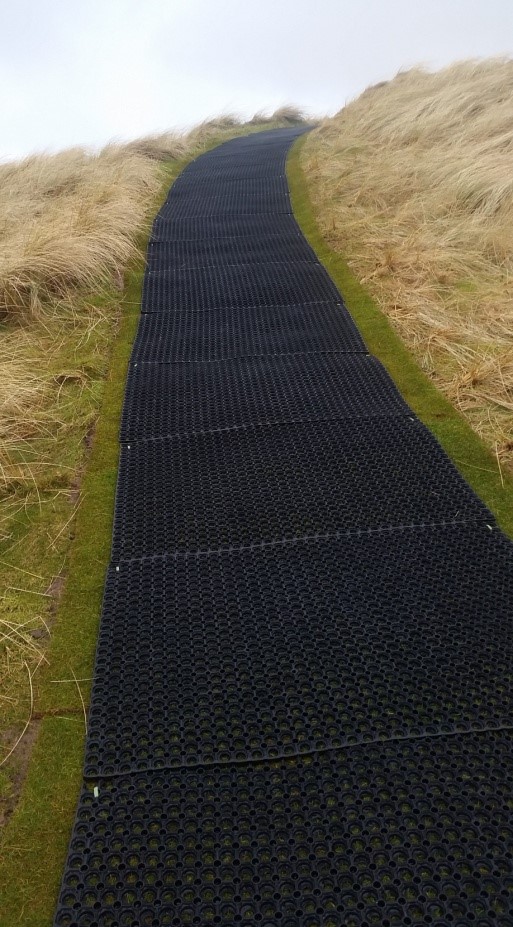
As I write this, the golf season is fast approaching. We are looking forward to the longer evenings, a bit of sunshine, and to getting the mowers back out so we can start manicuring your golf course once again. I hope you all have your games in shape…it has been a bit quiet out here recently so we are really looking forward to seeing you all out there enjoying our course again!

